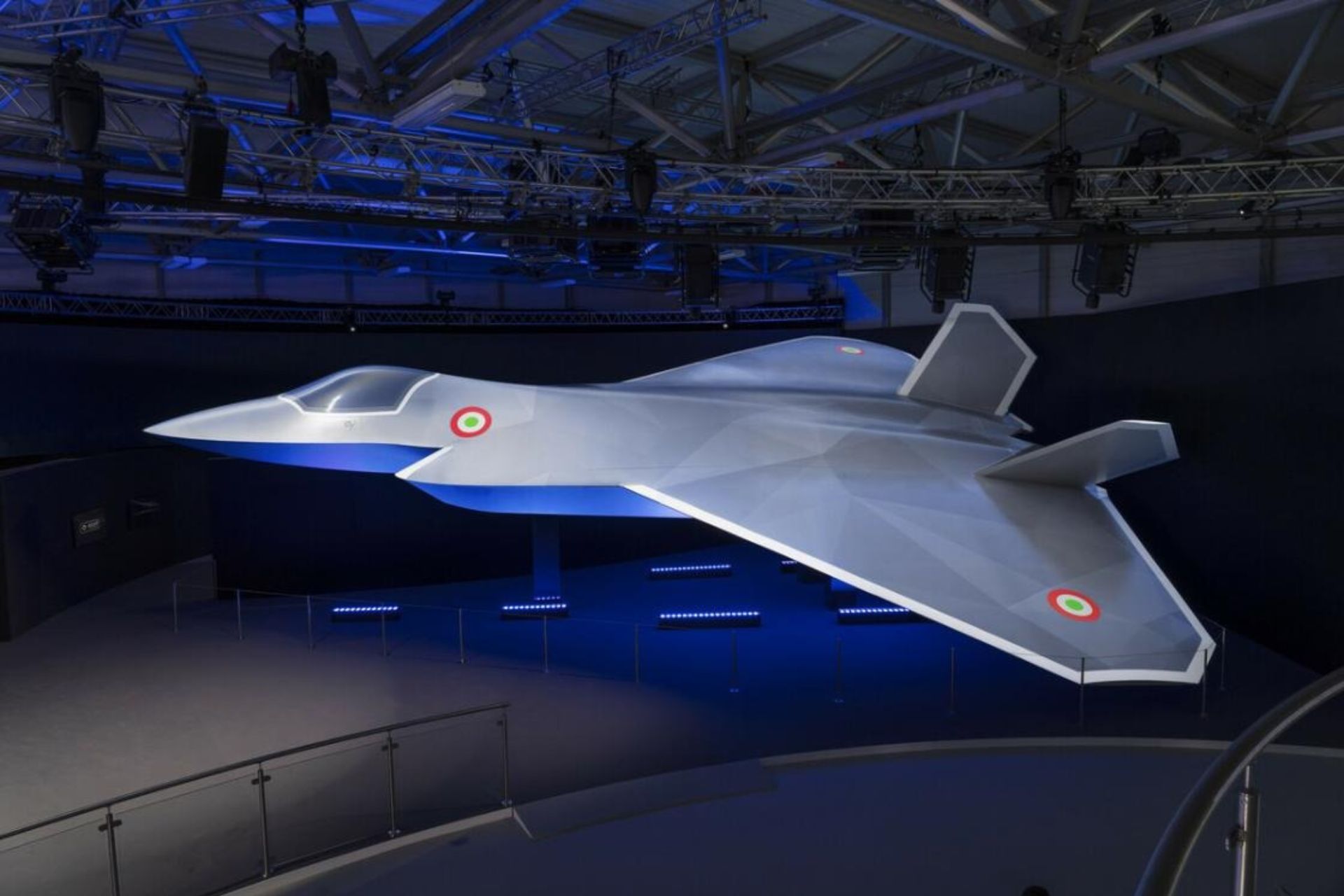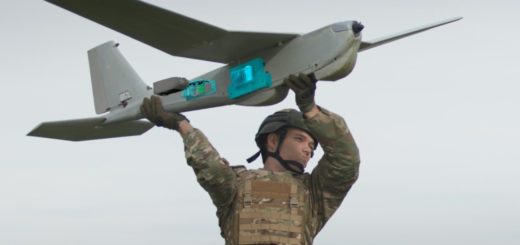Leave SCAF for GCAP: Germany’s Growing Alliance with UK in Combat Drone Technology

{loadposition bannertop}
{loadposition sidebarpub}
The strategic relationship between Germany and the United Kingdom has taken on new following the announcement of the Trinity House Agreement on October 23, 2024. This defense agreement focuses on joint development efforts, particularly creating a combat drone. The collaboration between the two countries could signal a shift in Germany’s defense alignment, as it also encompasses areas related to both the SCAF (Système de Combat Aérien du Futur) and GCAP (Global Combat Air Programme) projects.
Follow Army Recognition on Google News at this link
Unlike SCAF, which focuses on intra-European collaboration, GCAP seeks to form a broader transcontinental alliance (Picture source: Leonardo )
In November 2023, rumors surfaced suggesting that Germany might abandon the SCAF program in favor of joining GCAP. Despite official denials, the Trinity House Agreement seems to bolster these claims by intensifying defense ties between Germany and the UK, including joint land-based weapons projects and drone development.
The SCAF Project, also known as FCAS (Future Combat Air System), is a large-scale European initiative involving France, Germany, and Spain. It aims to develop a next-generation air combat system, expected to be operational around 2040. This program is based on a “system of systems” approach, including three main components: the Next Generation Fighter (NGF), unmanned systems called Remote Carriers (RC), and a digital infrastructure known as the Combat Cloud. The NGF, led by Dassault Aviation, will serve as the central platform for advanced combat missions, assisted by RC drones that provide specific support capabilities. The Combat Cloud will enable integrated communication between all system elements, optimizing data management and decision-making, even in contested environments. The objective is to strengthen European technological sovereignty and ensure autonomous defense capabilities for future threats.
The GCAP Project, launched in 2022, is a competing initiative led by the UK, Italy, and Japan. The goal is to develop a sixth-generation fighter that can operate alongside unmanned systems, combat drones, and advanced intelligent weapons. Unlike SCAF, which focuses on intra-European collaboration, GCAP seeks to form a broader transcontinental alliance. The project aims to replace the UK and Italian Eurofighter Typhoons and Japan’s Mitsubishi F-2 by 2035. It benefits from industrial expertise provided by partners such as BAE Systems, Leonardo, and Mitsubishi Heavy Industries.
While both programs aim to develop next-generation air combat capabilities, they differ in structure and ambition. SCAF focuses on enhancing European interoperability between existing platforms like the Rafale and Eurofighter, while GCAP involves broader cooperation with a focus on transnational alliances beyond Europe. However, delays in the SCAF program could lead to Germany reorienting part of its efforts toward projects that address its more immediate needs.
The Trinity House Agreement, presented by the UK Ministry of Defense as a significant step for European security, underscores the growing importance of cooperation between the two largest European defense investors. In addition to enhanced joint exercises, the agreement includes provisions to protect critical underwater infrastructure and marks the first-ever temporary deployment of German P-8A Poseidon maritime patrol aircraft in Scotland, bolstering the UK’s surveillance capabilities.
During the ILA Air Show in Berlin in June 2024, Airbus Defence & Space unveiled a collaborative drone concept, or “loyal wingman,” designed to accompany fighters like the Eurofighter Typhoon (Picture source: Army Recognition)
A major component of this agreement is the defense industry collaboration, including plans for a large-caliber weapons manufacturing facility in the UK and joint work on ground-based drones (UGVs). This initiative could pave the way for British participation in the Franco-German MGCS (Main Ground Combat System) project. The agreement also emphasizes the rapid development of new, more precise long-range weapons systems. Although the German Defense Ministry has been vague on this point, these projects could fall under the European Long-range Strike Approach (ELSA) program, which the UK recently joined.
The Trinity House Agreement also touches on air defense cooperation, with plans to integrate British and German systems to better protect European airspace from long-range missile threats. Despite the UK’s current limitations in this domain, as noted in a recent report, this cooperation could enhance collective security in Europe.
One of the most notable aspects of this agreement is the commitment to developing autonomous aerial drones that can operate in coordination with fighter aircraft. Although Germany had initially planned to collaborate with France on the Maritime Airborne Warfare System (MAWS) project, Berlin’s decision to purchase P-8A Poseidon aircraft from Boeing ended that initiative. The agreement with the UK could signal a shift toward solutions more tailored to the specific needs of both nations.
The German Ministry of Defense clarified that these drones will be developed in close cooperation with allies, particularly France, as part of SCAF’s third pillar, which Germany oversees. This pillar focuses on drones and connected effectors. During the ILA Air Show in Berlin in June 2024, Airbus Defence & Space unveiled a collaborative drone concept, or “loyal wingman,” designed to accompany fighters like the Eurofighter Typhoon. Although the technical details of this project remain undisclosed, it appears to align with the goals of the Trinity House Agreement.
Finally, supporting Ukraine remains a central objective for both countries. This agreement reaffirms their commitment to providing Ukraine with the military capabilities to resist Russian aggression. Concrete initiatives include integrating modern missile systems into the Sea King helicopters donated by Germany and closer collaboration between the UK and German defense industries to support Ukraine’s war effort.

{loadposition bannertop}
{loadposition sidebarpub}
The strategic relationship between Germany and the United Kingdom has taken on new following the announcement of the Trinity House Agreement on October 23, 2024. This defense agreement focuses on joint development efforts, particularly creating a combat drone. The collaboration between the two countries could signal a shift in Germany’s defense alignment, as it also encompasses areas related to both the SCAF (Système de Combat Aérien du Futur) and GCAP (Global Combat Air Programme) projects.
Unlike SCAF, which focuses on intra-European collaboration, GCAP seeks to form a broader transcontinental alliance (Picture source: Leonardo )
In November 2023, rumors surfaced suggesting that Germany might abandon the SCAF program in favor of joining GCAP. Despite official denials, the Trinity House Agreement seems to bolster these claims by intensifying defense ties between Germany and the UK, including joint land-based weapons projects and drone development.
The SCAF Project, also known as FCAS (Future Combat Air System), is a large-scale European initiative involving France, Germany, and Spain. It aims to develop a next-generation air combat system, expected to be operational around 2040. This program is based on a “system of systems” approach, including three main components: the Next Generation Fighter (NGF), unmanned systems called Remote Carriers (RC), and a digital infrastructure known as the Combat Cloud. The NGF, led by Dassault Aviation, will serve as the central platform for advanced combat missions, assisted by RC drones that provide specific support capabilities. The Combat Cloud will enable integrated communication between all system elements, optimizing data management and decision-making, even in contested environments. The objective is to strengthen European technological sovereignty and ensure autonomous defense capabilities for future threats.
The GCAP Project, launched in 2022, is a competing initiative led by the UK, Italy, and Japan. The goal is to develop a sixth-generation fighter that can operate alongside unmanned systems, combat drones, and advanced intelligent weapons. Unlike SCAF, which focuses on intra-European collaboration, GCAP seeks to form a broader transcontinental alliance. The project aims to replace the UK and Italian Eurofighter Typhoons and Japan’s Mitsubishi F-2 by 2035. It benefits from industrial expertise provided by partners such as BAE Systems, Leonardo, and Mitsubishi Heavy Industries.
While both programs aim to develop next-generation air combat capabilities, they differ in structure and ambition. SCAF focuses on enhancing European interoperability between existing platforms like the Rafale and Eurofighter, while GCAP involves broader cooperation with a focus on transnational alliances beyond Europe. However, delays in the SCAF program could lead to Germany reorienting part of its efforts toward projects that address its more immediate needs.
The Trinity House Agreement, presented by the UK Ministry of Defense as a significant step for European security, underscores the growing importance of cooperation between the two largest European defense investors. In addition to enhanced joint exercises, the agreement includes provisions to protect critical underwater infrastructure and marks the first-ever temporary deployment of German P-8A Poseidon maritime patrol aircraft in Scotland, bolstering the UK’s surveillance capabilities.

During the ILA Air Show in Berlin in June 2024, Airbus Defence & Space unveiled a collaborative drone concept, or “loyal wingman,” designed to accompany fighters like the Eurofighter Typhoon (Picture source: Army Recognition)
A major component of this agreement is the defense industry collaboration, including plans for a large-caliber weapons manufacturing facility in the UK and joint work on ground-based drones (UGVs). This initiative could pave the way for British participation in the Franco-German MGCS (Main Ground Combat System) project. The agreement also emphasizes the rapid development of new, more precise long-range weapons systems. Although the German Defense Ministry has been vague on this point, these projects could fall under the European Long-range Strike Approach (ELSA) program, which the UK recently joined.
The Trinity House Agreement also touches on air defense cooperation, with plans to integrate British and German systems to better protect European airspace from long-range missile threats. Despite the UK’s current limitations in this domain, as noted in a recent report, this cooperation could enhance collective security in Europe.
One of the most notable aspects of this agreement is the commitment to developing autonomous aerial drones that can operate in coordination with fighter aircraft. Although Germany had initially planned to collaborate with France on the Maritime Airborne Warfare System (MAWS) project, Berlin’s decision to purchase P-8A Poseidon aircraft from Boeing ended that initiative. The agreement with the UK could signal a shift toward solutions more tailored to the specific needs of both nations.
The German Ministry of Defense clarified that these drones will be developed in close cooperation with allies, particularly France, as part of SCAF’s third pillar, which Germany oversees. This pillar focuses on drones and connected effectors. During the ILA Air Show in Berlin in June 2024, Airbus Defence & Space unveiled a collaborative drone concept, or “loyal wingman,” designed to accompany fighters like the Eurofighter Typhoon. Although the technical details of this project remain undisclosed, it appears to align with the goals of the Trinity House Agreement.
Finally, supporting Ukraine remains a central objective for both countries. This agreement reaffirms their commitment to providing Ukraine with the military capabilities to resist Russian aggression. Concrete initiatives include integrating modern missile systems into the Sea King helicopters donated by Germany and closer collaboration between the UK and German defense industries to support Ukraine’s war effort.





